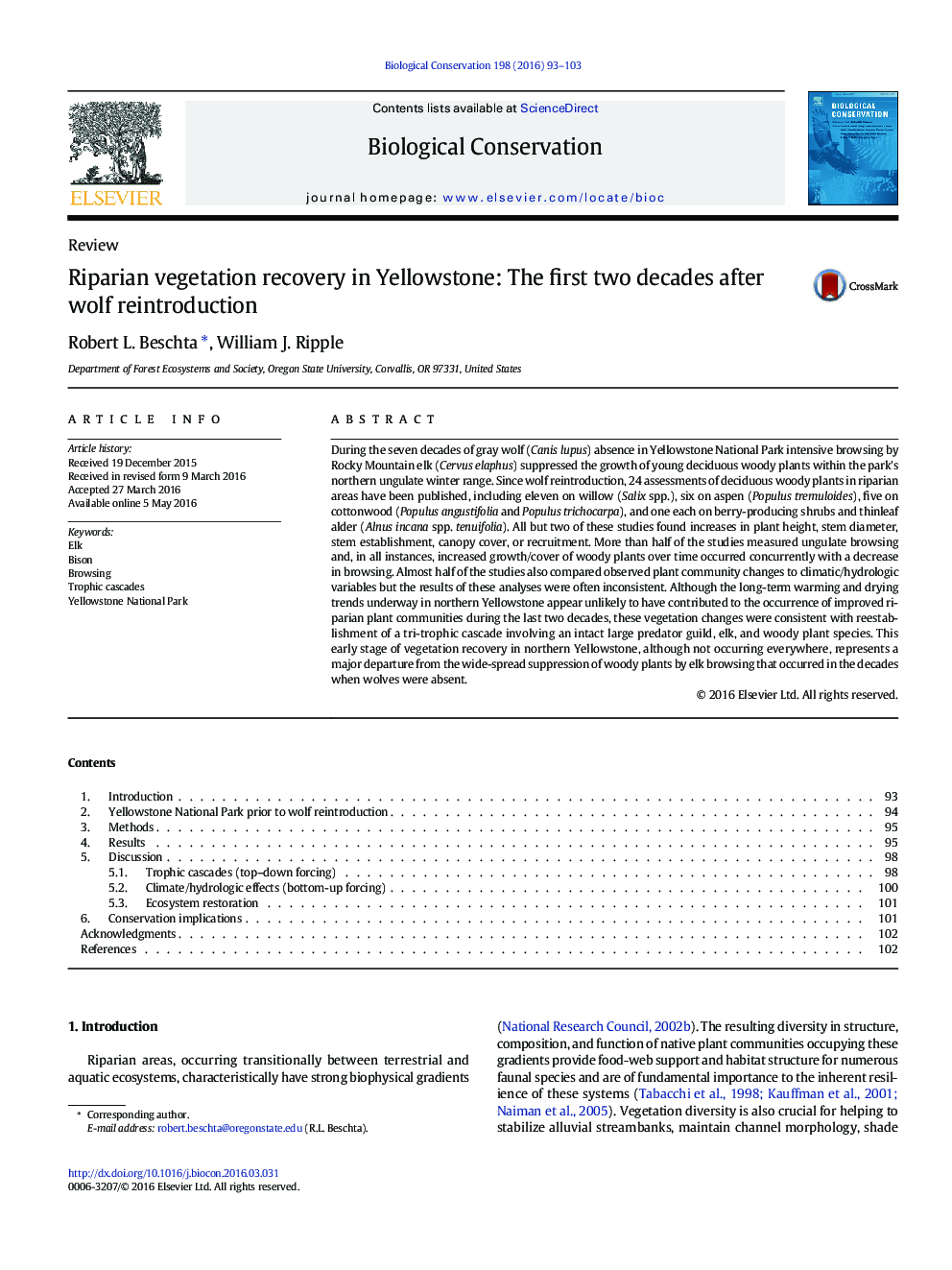| کد مقاله | کد نشریه | سال انتشار | مقاله انگلیسی | نسخه تمام متن |
|---|---|---|---|---|
| 4385008 | 1617903 | 2016 | 11 صفحه PDF | دانلود رایگان |
During the seven decades of gray wolf (Canis lupus) absence in Yellowstone National Park intensive browsing by Rocky Mountain elk (Cervus elaphus) suppressed the growth of young deciduous woody plants within the park's northern ungulate winter range. Since wolf reintroduction, 24 assessments of deciduous woody plants in riparian areas have been published, including eleven on willow (Salix spp.), six on aspen (Populus tremuloides), five on cottonwood (Populus angustifolia and Populus trichocarpa), and one each on berry-producing shrubs and thinleaf alder (Alnus incana spp. tenuifolia). All but two of these studies found increases in plant height, stem diameter, stem establishment, canopy cover, or recruitment. More than half of the studies measured ungulate browsing and, in all instances, increased growth/cover of woody plants over time occurred concurrently with a decrease in browsing. Almost half of the studies also compared observed plant community changes to climatic/hydrologic variables but the results of these analyses were often inconsistent. Although the long-term warming and drying trends underway in northern Yellowstone appear unlikely to have contributed to the occurrence of improved riparian plant communities during the last two decades, these vegetation changes were consistent with reestablishment of a tri-trophic cascade involving an intact large predator guild, elk, and woody plant species. This early stage of vegetation recovery in northern Yellowstone, although not occurring everywhere, represents a major departure from the wide-spread suppression of woody plants by elk browsing that occurred in the decades when wolves were absent.
Journal: Biological Conservation - Volume 198, June 2016, Pages 93–103
